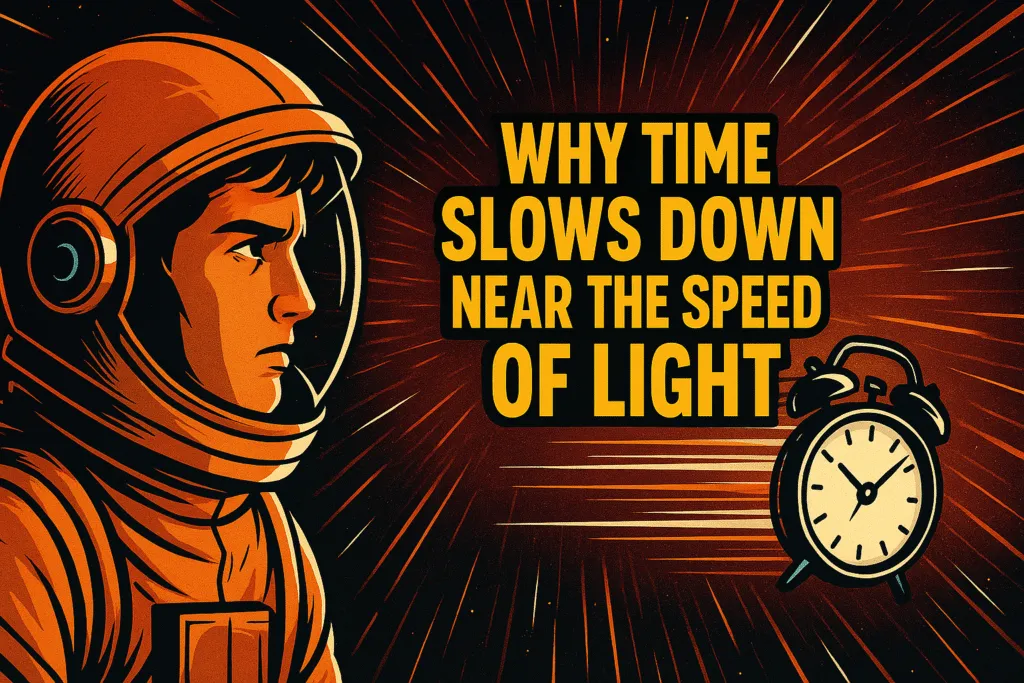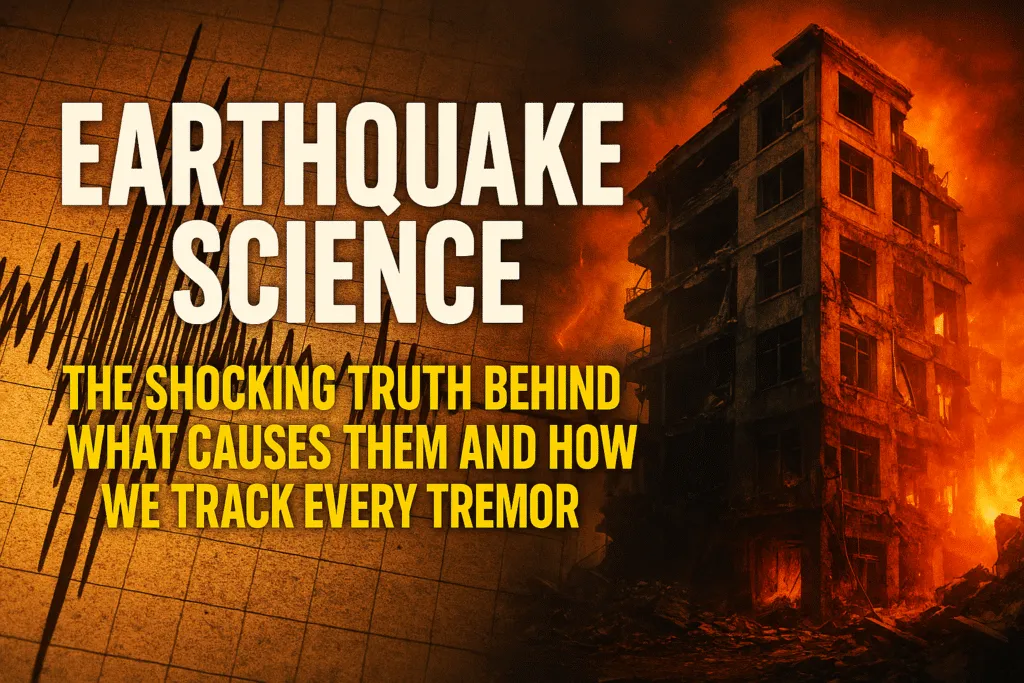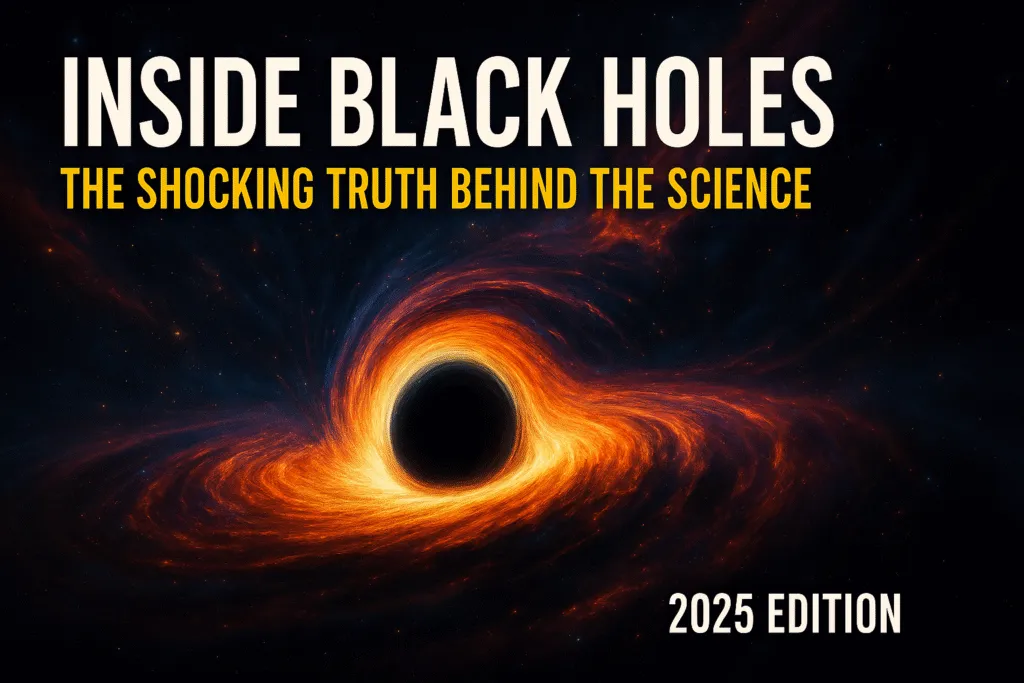Introduction
The concept of time behaving differently near the speed of light isn’t just a science fiction fantasy—it’s a proven scientific phenomenon. As we dive deeper into the mysteries of physics, one of the most mind-bending ideas we encounter is time dilation. According to Einstein’s theory of special relativity, time doesn’t tick the same for everyone. The closer an object moves to the speed of light, the slower time passes for it compared to someone standing still.
This strange behavior of time isn’t just theoretical. It has real-world implications in space travel, satellite technology, and high-energy particle experiments. Even GPS satellites orbiting Earth have to account for time moving slightly differently than it does on the ground—all because of their high speeds and distance from Earth’s gravity.
As a tech blogger, diving into the speed of light isn’t just about physics—it’s about exploring how our understanding of time and motion shapes modern technology. This topic doesn’t just challenge our view of reality, it pushes the boundaries of what we believe is possible. Understanding how and why time slows down at such speeds helps bridge the gap between theoretical science and real-world innovation.
In this article, we’ll break down the science behind time dilation in simple terms and explore what really happens as we approach the speed of light. Whether you’re a science enthusiast or someone just curious about the universe, you’re about to uncover one of the most fascinating aspects of modern physics.
Understanding Time Dilation
Time dilation is one of the most fascinating effects predicted by Einstein’s theory of special relativity. It refers to the phenomenon where time appears to pass at different rates for observers who are moving relative to one another. When an object moves closer to the speed of light, time for that object slows down compared to someone at rest. This isn’t just a theory—it has been confirmed through experiments involving high-speed particles and atomic clocks on airplanes.
Imagine two twins: one stays on Earth while the other travels through space at speeds nearing the speed of light. When the space-traveling twin returns, they would be younger than the one who stayed behind. This strange but real effect is a direct result of time dilation. It challenges our everyday experience with time, where we expect clocks to tick the same for everyone, no matter where they are or how fast they’re moving.
The speed of light acts as a cosmic speed limit, and as objects get closer to that limit, the way time flows for them changes dramatically. For example, in particle accelerators, scientists observe unstable particles that should decay in microseconds lasting much longer—only because they’re moving at speeds close to the speed of light.
Understanding time dilation gives us insight into how the universe truly works. It shows us that time isn’t absolute; it’s flexible and depends on speed and gravity. This knowledge not only deepens our understanding of physics but also plays a critical role in technologies like GPS, where even slight differences in time need to be corrected due to the effects of both speed and gravity.
As we continue exploring the cosmos and pushing the boundaries of speed, time dilation will remain a key concept in understanding how the universe behaves at the edge of light.
Einstein’s Theory of Special Relativity
Einstein’s theory of special relativity revolutionized the way we understand space, time, and motion. Introduced in 1905, this groundbreaking theory explains that the laws of physics are the same for all non-accelerating observers, and that the speed of light is constant in a vacuum, regardless of how fast an observer or light source is moving. These simple yet powerful ideas lead to astonishing consequences—one of the most famous being time dilation.
According to special relativity, time doesn’t move at a fixed rate for everyone. As an object moves faster, especially when it approaches the speed of light, time slows down for that object relative to someone at rest. This isn’t just theoretical—it’s been tested and confirmed through real-world experiments, like measuring time on fast-moving jets or observing particles that survive longer than expected due to high-speed travel.
One of the key postulates of this theory is that nothing with mass can reach or exceed the speed of light. As an object’s speed increases, so does its mass, requiring more and more energy to keep accelerating. At the speed of light, the energy required would be infinite—making it physically impossible for any object with mass to reach that speed.
The special theory of relativity doesn’t just apply to exotic space travel—it has practical implications in today’s technology. Systems like GPS rely on extremely precise time measurements, which must account for the tiny but real effects of both speed and gravity on time.
Understanding Einstein’s theory helps us grasp why the speed of light is not just a fast number—it’s a boundary in nature that reshapes how time and space behave. This theory lays the foundation for exploring how and why time slows down as we approach this universal speed limit.
What Happens at the Speed of Light?
The speed of light is the ultimate speed limit in our universe—roughly 299,792 kilometers per second. But what actually happens if something could reach that speed? According to Einstein’s theory of special relativity, the answer is both fascinating and mind-bending.
As an object moves faster and approaches the speed of light, strange things begin to happen. Time for that object slows down relative to an outside observer—a phenomenon known as time dilation. At exactly the speed of light, time would theoretically stop altogether for the moving object. However, this applies only to massless particles like photons. For anything with mass, reaching the speed of light is physically impossible.
Another effect involves mass. As an object speeds up, its relativistic mass increases. This means it becomes heavier and harder to accelerate. To reach the speed of light, it would require an infinite amount of energy—something no known power source can provide. That’s why the speed of light remains a boundary rather than a goal.
From the perspective of a photon, which always travels at the speed of light, time doesn’t pass at all. A beam of light, in a sense, experiences no time between its emission and absorption. It exists in a timeless state, which is completely different from how we experience the world.
Reaching or even approaching the speed of light would completely change our perception of time, space, and reality. Objects would appear shorter in the direction of motion, and time would slow dramatically. These aren’t just ideas—they’re confirmed by experiments with high-speed particles and advanced timekeeping.
Understanding what happens at the speed of light helps us grasp why it’s such a fundamental limit in physics. It’s not just a high number—it’s a boundary woven into the very fabric of space and time.
The Role of the Speed of Light in Physics
The speed of light isn’t just a large number in physics—it’s a fundamental constant that shapes the structure of the universe. Denoted by the letter c, the speed of light in a vacuum is exactly 299,792,458 meters per second. This constant appears in many core equations and theories, playing a critical role in how we understand time, space, energy, and motion.
One of the most famous equations in physics, E = mc², shows the deep connection between mass and energy—and at the center of it is the speed of light. In this equation, the speed of light acts as a conversion factor that demonstrates how a small amount of mass can be converted into a large amount of energy. This principle powers everything from nuclear reactions in the sun to atomic bombs.
In the theory of special relativity, the speed of light represents the ultimate speed limit. Nothing with mass can reach or exceed it because doing so would require infinite energy. As objects move faster, their mass increases, time slows down, and distances contract—all because of this single constant.
The speed of light also defines how quickly information and causality can travel. It determines how we observe distant stars, galaxies, and cosmic events. When we look at objects in space, we’re seeing them as they were in the past—because the light from those objects took years, or even billions of years, to reach us.
Even modern technologies like GPS depend on precise calculations involving the speed of light. Signals from satellites travel at light speed, and even the tiniest delays caused by relativity must be corrected to ensure accuracy.
In essence, the speed of light isn’t just a fast speed—it’s a cornerstone of modern physics, influencing everything from the behavior of particles to the vast structure of the cosmos.
How Time Slows Down: Explained with Examples
Time slowing down as we approach the speed of light may sound like science fiction, but it’s a proven scientific reality. This phenomenon, called time dilation, means that time moves more slowly for objects in motion—especially as they get closer to the speed of light—compared to those at rest.
To understand this better, let’s look at some real-world and thought experiment examples.
1. The Twin Paradox
Imagine two twins. One stays on Earth while the other boards a spaceship traveling at speeds close to the speed of light. When the space-traveling twin returns, they are younger than the sibling who stayed on Earth. That’s because time moved slower for the twin who was traveling at near-light speeds. This isn’t a fantasy—it’s a direct consequence of special relativity.
2. Particle Accelerators
In labs like CERN, scientists accelerate particles to speeds near the speed of light. Unstable particles that normally decay in microseconds live much longer because time slows down for them. Their internal clocks tick slower due to their high velocity—providing concrete, observable proof of time dilation.
3. GPS Satellites
Global Positioning System (GPS) satellites orbit Earth at high speeds. Even though they’re not near the speed of light, time dilation still affects them. Their onboard atomic clocks tick slightly faster or slower than those on Earth due to a combination of speed and weaker gravity. Engineers must correct this difference to ensure GPS accuracy.
As these examples show, the closer you get to the speed of light, the more noticeable time dilation becomes. The speed of light isn’t just a speed—it’s a threshold that marks when time begins to behave differently. Understanding this helps us appreciate how physics governs not only the vast universe but also the technology we use every day.
The Twin Paradox – A Famous Thought Experiment
The Twin Paradox is one of the most famous and thought-provoking examples used to explain the effects of time dilation and the role of the speed of light in Einstein’s theory of special relativity. At its core, it reveals how time can pass differently for two people based on their motion through space.
Here’s how it goes: imagine identical twins. One stays on Earth, while the other travels through space on a high-speed journey—approaching the speed of light. After years of space travel, the twin returns home. Surprisingly, they find that their sibling on Earth has aged significantly more than they have. This dramatic age difference isn’t due to a malfunctioning clock—it’s a real effect of time slowing down for the traveling twin.
According to special relativity, as the spaceship approaches the speed of light, time slows down relative to an observer on Earth. To the twin on the spaceship, time feels normal. But from the Earth-bound twin’s perspective, the traveler’s clock is ticking more slowly. This leads to the younger age of the space-traveling twin upon return.
The paradox lies in the apparent symmetry: can’t each twin claim that the other was moving? The answer lies in acceleration. The traveling twin changes frames—accelerating away from Earth, turning around, and coming back—while the Earth-bound twin stays in an inertial frame. This breaks the symmetry and resolves the paradox.
The Twin Paradox beautifully illustrates the strange, non-intuitive consequences of approaching the speed of light. It’s a powerful reminder that time isn’t fixed—it’s flexible and shaped by motion. Though we may not yet travel at such speeds, this experiment helps us understand how the universe behaves at relativistic speeds, deepening our grasp of both time and reality itself.
Is It Possible to Travel at the Speed of Light?
The idea of traveling at the speed of light has fascinated scientists and dreamers alike for generations. It sparks visions of time travel, interstellar voyages, and the ability to explore the farthest corners of the universe. But according to our current understanding of physics, traveling at the speed of light is not possible for any object that has mass.
Einstein’s theory of special relativity explains why. As an object with mass accelerates toward the speed of light, its energy requirement grows exponentially. The faster it moves, the more energy it takes to keep accelerating. By the time it nears the speed of light, it would require an infinite amount of energy to continue speeding up—something that is physically impossible with any known technology or force in the universe.
Also, as objects move faster, their mass effectively increases. This makes acceleration even harder. Only massless particles like photons—particles of light—can naturally travel at the speed of light. For anything else, it’s a cosmic speed limit that can never be crossed.
Some theoretical concepts, like warp drives or wormholes, suggest possible loopholes around this barrier. However, these ideas remain speculative and far from practical application. They rely on exotic matter and unknown physics, and none of them have been proven or demonstrated.
While humans may never be able to travel at the actual speed of light, reaching a significant fraction of it could still revolutionize space exploration. Advanced propulsion systems are being researched to make near-light-speed travel a distant but exciting possibility.
In short, traveling at the speed of light remains a scientific impossibility for now. But understanding why that limit exists helps us push the boundaries of what’s possible—and keeps the dream of exploring the universe alive.
Real-Life Applications and Observations
The concept of time slowing down at the speed of light might seem purely theoretical, but it has real-world applications and has been observed in practical scenarios. Thanks to advancements in science and technology, the effects of time dilation predicted by Einstein’s theory of relativity are not just proven—they are essential to the systems we rely on every day.
One of the most well-known examples is the Global Positioning System (GPS). GPS satellites orbit Earth at high speeds and at high altitudes where gravity is weaker. Both their velocity and their distance from Earth cause time to flow slightly differently than it does on the surface. If we ignored these relativistic effects, GPS coordinates would quickly become inaccurate by several kilometers each day. Engineers account for time dilation by adjusting satellite clocks, ensuring accurate positioning for everything from navigation to delivery tracking.
Another clear observation comes from particle physics. In laboratories like CERN, scientists accelerate unstable particles to speeds close to the speed of light. These particles normally decay in a tiny fraction of a second, but when moving at such high speeds, their internal “clocks” slow down, and they live much longer than expected. This isn’t guesswork—it’s measured, repeated, and matches the predictions of relativity perfectly.
High-speed aviation also provides evidence. Atomic clocks flown on fast-moving jets have ticked slower than identical clocks kept on the ground. Though the differences are tiny, they are measurable and align exactly with what relativity predicts.
These real-life observations confirm that the speed of light isn’t just a theoretical limit—it influences how we build technology, navigate the world, and understand the universe. Time doesn’t flow at a fixed rate everywhere, and the closer we get to the speed of light, the more dramatic this difference becomes.
Conclusion
The speed of light is more than just an incredibly fast number—it’s a boundary woven into the very structure of our universe. As we’ve explored, moving closer to this limit doesn’t just increase speed; it changes how time flows, how mass behaves, and how we experience reality itself. From thought experiments like the Twin Paradox to real-world systems like GPS, the effects of traveling near the speed of light are not only observable but essential to our understanding of modern physics.
Einstein’s theory of special relativity opened the door to a deeper view of time and space, showing that they are not rigid, fixed backgrounds but flexible dimensions affected by motion and energy. Time dilation, once a strange idea, is now a measured and accepted part of science—used daily in technologies that guide planes, ships, and smartphones.
While humans may never be able to reach the speed of light, our growing knowledge about it continues to reshape the way we look at the cosmos. It reminds us that the universe is far stranger, more dynamic, and more fascinating than everyday life might suggest.
Understanding the impact of the speed of light doesn’t just satisfy curiosity—it helps us prepare for future breakthroughs in science and space exploration. As we push the limits of what’s possible, the lessons of light-speed travel and time dilation will remain at the core of our journey into the unknown.
Also Read: Most Mind-Blowing Scientific Discoveries of the 21st Century
FAQs
1. What is the speed of light?
The speed of light in a vacuum is approximately 299,792 kilometers per second (about 186,282 miles per second). It’s the fastest speed at which information or matter can travel.
2. Why does time slow down near the speed of light?
According to Einstein’s special relativity, as an object moves faster—especially near the speed of light—time slows down relative to an observer at rest. This effect is known as time dilation and has been confirmed through various scientific experiments.
3. Can anything travel faster than the speed of light?
No, according to current physics, nothing with mass can reach or exceed the speed of light. Doing so would require infinite energy, which is not physically possible.
4. Do we observe time dilation in real life?
Yes, time dilation is observed in real-life scenarios such as GPS satellites, particle accelerators, and high-speed jets. These systems need to account for time differences caused by speed and gravity to function accurately.
5. What happens to mass at the speed of light?
As an object moves faster, its mass increases. Near the speed of light, its mass becomes so large that it would require infinite energy to accelerate further, making it impossible to reach or exceed light speed.
6. Why can light travel at the speed of light?
Light consists of photons, which are massless particles. Since they have no mass, they naturally travel at the speed of light without requiring energy to accelerate.
7. Will humans ever travel at the speed of light?
With current technology and understanding of physics, it’s not possible. However, scientists continue to explore theoretical concepts that may one day allow near-light-speed travel.













